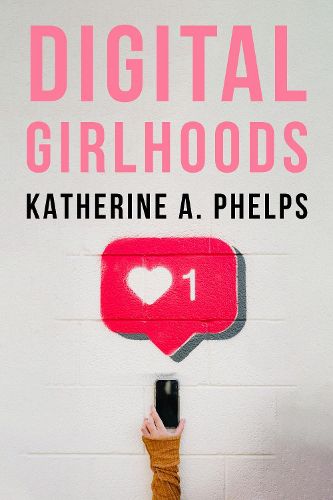Readings Newsletter
Become a Readings Member to make your shopping experience even easier.
Sign in or sign up for free!
You’re not far away from qualifying for FREE standard shipping within Australia
You’ve qualified for FREE standard shipping within Australia
The cart is loading…






Tween girls in America today are growing up on social media, posting selfies and sharing "stories." In Digital Girlhoods, Katherine Phelps emphasizes tween girls' agency on social media vis-A-vis identity formation, content creation, and community building. When a tween girl posts a video on YouTube asking the world, "Am I pretty or ugly?", she is also asking, "Who am I?" This content makes visible the pitfalls and potentials of these tweens creating their own digital narratives-and it asks us to take them seriously.
Featuring in-depth interviews with a cross section of tween girls, Phelps allows them to give meanings to their relationships with social media and their peers in their own words. As tween girls embody and negotiate the many contradictions of American girlhoods through social media participation (for example, the "Pretty or Ugly" YouTube trend), Phelps asks, how are tween girls living and experiencing girlhoods in the digital age?
The processes of experiencing and enacting tweenhood and girlhood online are explicitly gendered. Digital Girlhoods thoughtfully considers what tween girlhoods look and feel like in America today.
$9.00 standard shipping within Australia
FREE standard shipping within Australia for orders over $100.00
Express & International shipping calculated at checkout
Stock availability can be subject to change without notice. We recommend calling the shop or contacting our online team to check availability of low stock items. Please see our Shopping Online page for more details.
Tween girls in America today are growing up on social media, posting selfies and sharing "stories." In Digital Girlhoods, Katherine Phelps emphasizes tween girls' agency on social media vis-A-vis identity formation, content creation, and community building. When a tween girl posts a video on YouTube asking the world, "Am I pretty or ugly?", she is also asking, "Who am I?" This content makes visible the pitfalls and potentials of these tweens creating their own digital narratives-and it asks us to take them seriously.
Featuring in-depth interviews with a cross section of tween girls, Phelps allows them to give meanings to their relationships with social media and their peers in their own words. As tween girls embody and negotiate the many contradictions of American girlhoods through social media participation (for example, the "Pretty or Ugly" YouTube trend), Phelps asks, how are tween girls living and experiencing girlhoods in the digital age?
The processes of experiencing and enacting tweenhood and girlhood online are explicitly gendered. Digital Girlhoods thoughtfully considers what tween girlhoods look and feel like in America today.